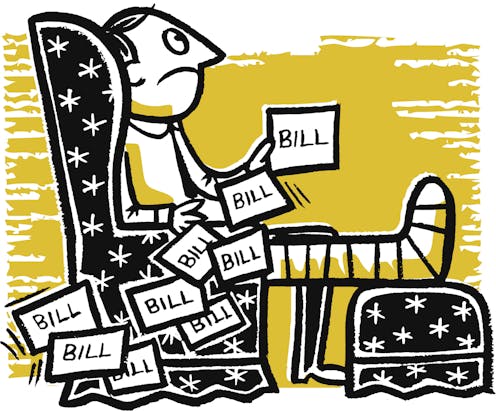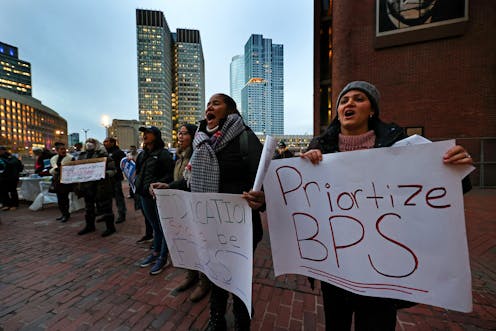Australian workers hoard more than 160 million days of untaken leave. So could you be forced to take a break?

With the end of year holidays looming, it’s easy to imagine Australians are getting ready to check out of the workplace and head for the beach. But a recent survey shows Australians are not taking holidays nearly as often as they are entitled to.
The survey of more than 1,000 Australian workers, taken from July to September 2024, has found that employees have 160 million days of annual leave banked. More than one in five employees (22%) had accrued more than four weeks, with older workers having higher averages than their younger colleagues.
The findings coincide with another study showing nearly half of Australian workers report feeling burned out.
So how do Australians’ leave habits compare with workers in other countries, such as the United States and Japan? And can companies here force – or just encourage – workers to take a break?
It’s important to take leave
Not taking annual leave has negative effects on both mental and physical health for workers. But it can also impact a company’s bottom line.
Research has shown that not taking leave reduces employee’s motivation and increases the risk of burnout, leading to reductions in job satisfaction, absenteeism and lower productivity.
The University of Pittsburgh’s Mind-Body Centre found taking holidays increases positive emotions and reduces depression.
Why workers aren’t taking leave
The reasons for employees not taking leave are multifaceted and complex.
In uncertain economic times, employees may try to accrue annual leave as a financial buffer should it be required. With rising costs of living, employees who can’t afford to travel may also be reluctant to take leave and stay at home.
In some cases, organisations may have cultures where working long hours and not taking leave is viewed positively.
Research has shown that in some organisations, taking leave may be viewed as a lack of commitment, resulting in employees being concerned about job security and career progression.
Since the pandemic, employees continue to report staff shortages in many roles and increased workloads. Employees are less likely to take time off if they feel they may be burdening others if there is no one to take on their work.
Returning to work to an overflowing inbox and a mile high list of tasks mean employees are likely to take shorter holidays, not giving them sufficient time to take a meaningful break.
And while flexible work arrangements have been welcomed by workers, research shows the inability to switch off at the end of the day can spill over into annual leave.
Is leave hoarding worse in Australia?
Annual leave entitlements differ between countries. The standard entitlement for full-time workers in Australia is 20 days per year.
In the United States, the average worker is entitled to between 10 and 14 days of leave a year. But this does not carry over if unused. Despite this, American workers leave up to 55% of leave days unused.
German employees are entitled to 30 days of leave a year. Only 12% of employees accrue excess leave, in a country where taking regular holidays is a cultural norm.
In the United Kingdom, 65% of employees don’t take the full 28 days of leave available to them. And in Japan, a country renowned for long working hours, 20% of leave days are not taken, even though many Japanese workers only get 10 days leave a year.
Can companies force workers to take leave?
Employers can direct employees to take leave, but only where there is a holiday shutdown period or where an employee has accrued excessive leave.
The amount of notice employers are required to give staff to take leave is not generally specified, however it may be prescribed in relevant awards, enterprise agreements or the employer’s own policy.
The direction to take leave must also be reasonable, taking into consideration factors including the amount of notice given, usual practices in the organisation, timing, and the needs of the employee and the employer.
Employers don’t like holding large leave balances, as accrued annual leave is recorded as a liability on balance sheets. Further, the annual leave entitlement is paid at the rate the employee is on at the time of the leave, not their rate at the time of accrual.
How companies can get staff to take leave
Taking leave matters. One study shows year-end performance rose by 8% for every extra 10 hours of annual leave an employee took.
And there are added benefits for employees too. Using your holiday leave can help you get a promotion or pay rise.
There are a number of ways employers can encourage staff to take their annual leave entitlement. Promoting a culture of switching off after work and on vacation is one. It’s difficult for an employee to have a relaxing holiday while their phone is pinging across multiple different platforms.
Managers need to ensure adequate resources are provided and workloads are managed effectively.
Google has utilised AI tools to support employees in monitoring workloads and reallocating work across teams. Managers need to work closely with their teams to ensure they understand workload pressures and provide support.
Encouraging employees not to check in on leave is also essential.
Lead by example
Organisations should take steps to foster a supportive work culture, where wellbeing and taking regular breaks are prioritised. Senior managers need to model this behaviour in their own actions and their communications with their staff.
Sending an email telling staff to take leave and focus on well-being is likely to fall flat if managers are spending 60-plus hour weeks in the office, with little to no time away on leave.
Organisations can also provide incentives such as offering bonuses or other arrangements to encourage employees to take breaks.
And finally, education plays a key part in driving change. Employees may not be aware of the negative effects of not switching off from work and or taking regular holidays, leading to increased risk of disengagement and burnout.
Authors: The Conversation















